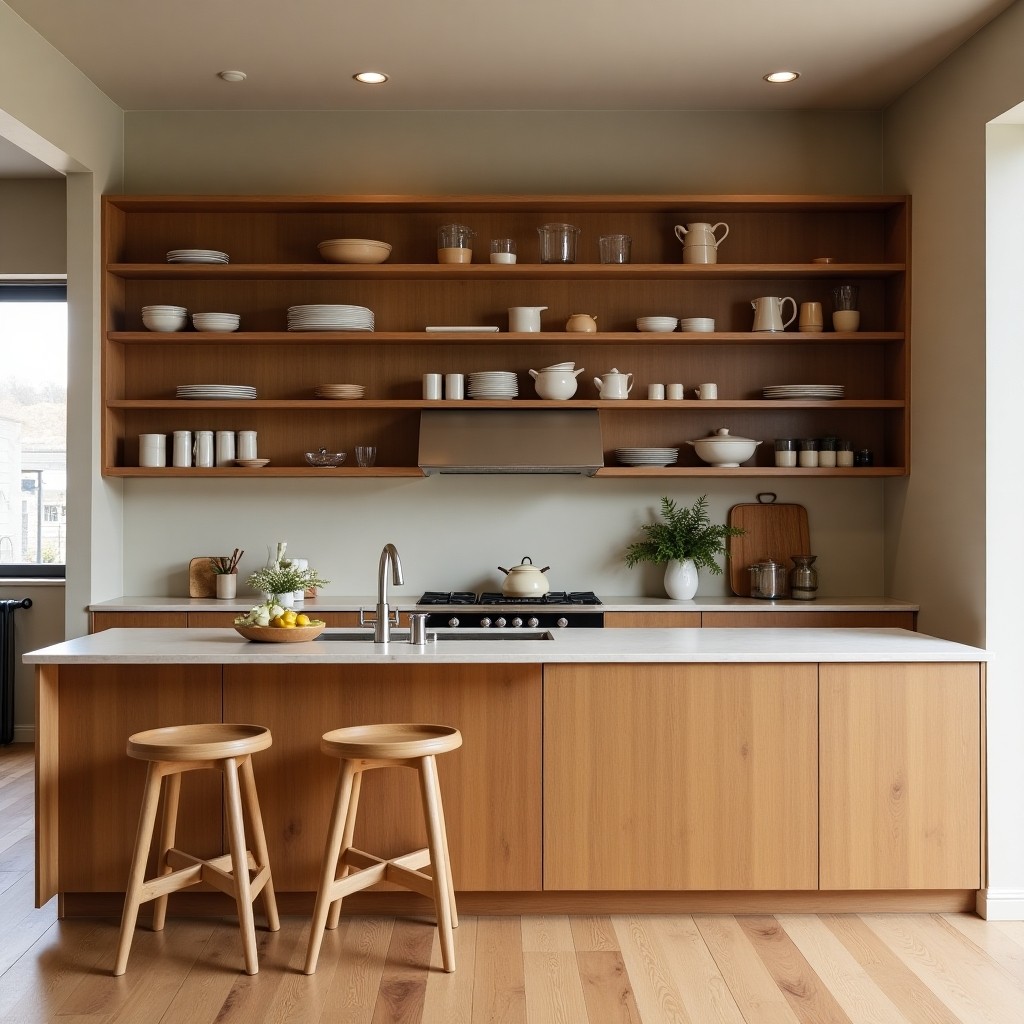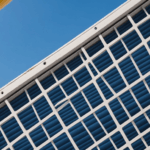In today’s economy, homeowners are increasingly looking for ways to revitalize their living spaces without incurring hefty expenses. The kitchen, often considered the heart of the home, stands as a focal point for such endeavors. Redesigning a kitchen can significantly enhance its functionality but can also come with a high price tag. Fortunately, it’s entirely possible to achieve a fresh look through strategic layout changes that don’t drain your finances.
First and foremost, consider how traffic flows through your kitchen. Streamlining this flow can lead to a more functional space without the need for significant structural changes. Often, simple shifts, such as repositioning an island or extending a countertop, can create more room to move around, making meal preparation and entertaining more efficient and enjoyable. According to the National Kitchen & Bath Association, an efficient kitchen layout can reduce time spent navigating the space by up to 30%.
One practical approach is to adopt the “work triangle” concept. This interior remodeling principle involves ensuring that the refrigerator, sink, and stove are positioned in a triangular formation. This arrangement minimizes unnecessary movement, thus optimizing your cooking workflow. While creating a work triangle in a small kitchen may seem challenging, making slight adjustments—such as moving the microwave to an adjacent wall—can make all the difference without necessitating a complete overhaul.
To further capitalize on maximizing your budget, you can replace bulky cabinets with open shelving. This affordable solution not only brightens up the kitchen by creating an open, airy feel but also allows you direct access to frequently used items. Open shelving can be achieved with ready-to-install materials from any home improvement store, giving you a modern look at a fraction of the cost of custom cabinetry. Moreover, expert interior designers often suggest incorporating strategically placed shelves to provide increased accessibility while adding visual interest.
If you find open shelving too minimalist, consider removing a set of upper cabinets and replacing them with slimline units or wall-mounted racks. This offers the needed storage without the cost of custom-built options. Additionally, consider swapping traditional cabinet doors for glass-front ones. This will give your kitchen a fresh look without needing a full replacement and can be a great DIY project, adding a personalized touch without extensive professional costs.
For those interested in a more dramatic transition, a partial wall removal, sometimes called a “pony wall,” can open up the kitchen to adjacent living areas, creating a more expansive feel. According to real estate professionals, this can often be done for less than $500, depending on the wall’s structure and the materials used. When done strategically, these minor structural changes can add resale value to your home without exceeding your budget constraints.
Budget-friendly layout changes require a combination of creativity and practical planning. By focusing on mobility and space, and by implementing clever storage solutions, you can transform your kitchen into a more functional and aesthetically pleasing environment, all while keeping costs in check.
affordable countertop options
When considering countertop materials for a kitchen renovation, it’s essential to explore options that are not only stylish but also budget-friendly. High-end materials like marble and granite can significantly increase the costs, making them less viable for those looking to remodel while controlling expenses. Thankfully, there are several affordable alternatives that can offer both beauty and durability without the hefty price tag.
Laminate countertops are among the most economical choices available. They come in an impressive range of colors and patterns, some even mimicking the appearance of more expensive materials like stone or wood. Easy to clean and maintain, laminate surfaces are suitable for families and busy households. Additionally, installation is typically straightforward, further reducing labor costs.
Tile countertops provide another cost-effective solution. While ceramic or porcelain tiles offer a classic look and hard-wearing surface, they are also customizable in both color and pattern. This enables homeowners to inject some personal flair into the design. Maintenance involves keeping grout lines clean, but with today’s modern grouts and sealers, upkeep is relatively minimal.
For those enamored with the look of natural stone but daunted by its cost, engineered stone or quartz can be a perfect compromise. These surfaces combine quartz with resins to create a durable, heat-resistant countertop that matches the elegance of granite or marble. Although slightly more expensive than laminate or tile, they still provide a budget-friendly alternative to natural stone countertops.
Butcher block counters, made from wood strips glued together, offer warmth and are budget-conscious compared to high-end stone. While they require regular maintenance, like sealing and oiling, they add a touch of rustic charm and are often favored for kitchen islands or accents rather than the entire space.
Upcycling can also be a budget-friendly choice. Repurposing materials like reclaimed wood or salvaged stone not only minimizes costs but also supports sustainable interior remodeling practices. This approach can deliver unique, personalized countertops, making your kitchen truly one-of-a-kind.
- Laminate countertops offer a wide variety of colors and patterns, even mimicking expensive materials, and are easy to clean and install.
- Tile countertops are customizable and durable, allowing for personal style injections while keeping costs low compared to other materials.
- Engineered stone or quartz countertops provide the elegance of stone at a reduced cost and offer durability and heat resistance.
- Butcher block counters add warmth and charm, require regular maintenance, but are budget-friendly compared to high-end stone options.
- Upcycling materials like reclaimed wood or salvaged stone can reduce costs and promote eco-friendly remodeling, resulting in unique countertop designs.
cost-effective lighting solutions
Lighting plays a crucial role in the overall ambiance and functionality of a kitchen. However, during a kitchen renovation, mistakes in lighting choices are quite common, often leading to unnecessary expenses or unsatisfactory results. By understanding these common pitfalls, you can implement budget-friendly lighting solutions that enhance your kitchen without overspending.
One major mistake is over-investing in task lighting without considering the overall lighting plan. While task lighting is essential for areas where precision is needed, like countertops and cooking spaces, relying solely on spotlights can leave other areas dim and uninviting. To avoid this, aim for a balanced mix of lighting: ambient, task, and accent lighting. A good strategy is to install dimmable overhead lights or affordable LED strip lighting under cabinets. These options provide flexibility and are energy-efficient, helping to keep your lighting costs low over time.
Another frequent error is ignoring the color temperature of the lights. Kitchen lighting that is too warm or too cold can distort the appearance of your interior decor and make the kitchen feel less welcoming. Choose LED bulbs with a color temperature that matches natural daylight or opt for “soft white” to create a cozy and inviting atmosphere. LED bulbs are known for their longevity and energy efficiency, making them a cost-effective choice for interior remodeling.
People often overlook the potential of natural light, which is a valuable, budget-friendly resource. Maximizing natural light doesn’t necessarily require major structural changes. Simple solutions like using lighter window treatments or strategically placing mirrors to reflect daylight can brighten your space without any additional energy costs. As you remodel, consider the kitchen layout and window positioning to enhance natural light flow, reducing the need for artificial lighting during the day.
Moreover, chandeliers or elaborate overhead fixtures can drain a budget quickly, while not always providing the best lighting coverage. Instead of opting for one large, expensive fixture, consider using a series of smaller pendant lights. These are typically less expensive, easier to install or replace, and can be staggered over workspaces like kitchen islands for localized lighting. Additionally, choose fixtures with timeless designs that are not tied to trends, ensuring your investment remains stylish over the years.
Finally, forgetting about utility is a common oversight. Lights with easy maintenance, such as ones with accessible bulbs or easy-to-clean surfaces, are more practical in a kitchen setting where grime can accumulate over time. Opt for fixtures that allow for easy bulb replacement and have finishes that resist fingerprints and smudges.
By thoughtfully planning your lighting and avoiding these common mistakes, you can achieve a beautifully lit kitchen that enhances both the aesthetic and practical use of your space, all within a budget-friendly framework.
updating with paint and finishes
Transforming your kitchen with paint and finishes is a straightforward yet powerful method to rejuvenate your space without overextending your budget. This approach is not only cost-effective but also allows for a high degree of personalization and creativity in your kitchen renovation project.
Begin by selecting a color palette that complements the rest of your home, while also adding a fresh, modern touch to your kitchen. Neutral shades, such as whites, grays, and beiges, provide a timeless backdrop that allows for flexibility in changing decor over time. Meanwhile, bold hues can introduce vibrancy and character, making the kitchen a lively focal point of your home. If you’re hesitant to commit to an entirely bold palette, consider using an accent wall to introduce color without overwhelming the space.
Consider giving your cabinetry a facelift with paint. This tactic can dramatically change the appearance of your kitchen for a fraction of the cost involved in replacing cabinets. Whether you opt to paint them a crisp, clean white or a rich navy blue, a fresh coat of paint can cover imperfections and give your cabinetry a modern look. To increase the longevity and durability of your painted cabinets, select high-quality paint designed for high-traffic areas.
Don’t overlook the power of finishes when you’re in the midst of interior remodeling. Switching out old hardware for new cabinet knobs or drawer pulls can create an updated, cohesive look that complements your chosen paint color. Look for budget-friendly hardware options that mimic high-end styles, such as brushed nickel or antiqued brass finishes, to add a touch of elegance without breaking the bank.
Updating finishes can extend to other details, like faucet replacements or adding a new backsplash. A self-adhesive tile or re-grouted original tiles can refresh a backsplash affordably, providing an updated look that ties the whole room together. These small but significant changes are quick to accomplish and usually require minimal tools, making them ideal for DIY enthusiasts.
Finally, refreshing the overall finishes of appliances can make a noticeable difference. Peel-and-stick stainless steel films can be applied to older appliances to give them a contemporary, polished look. This strategy provides the aesthetic benefits of new appliances without the accompanying price tag.
As you wrap up this section of your kitchen renovation, remember that small changes can yield big rewards. The cumulative effect of updating your kitchen with paint and finishes can completely transform the space, making it feel new and inviting. Embrace the opportunity to make stylish, budget-friendly updates, and let your kitchen reflect both personal flair and practical design. With creativity and attention to detail, you can revitalize your kitchen’s appearance, creating a welcoming space that inspires both cooking and social gatherings.
maximizing storage economically
In a kitchen renovation, maximizing storage without overspending is often a top priority for homeowners. The key lies in understanding how to use existing space more efficiently and making smart choices about storage solutions. One of the simplest strategies is to utilize vertical space. Wall-mounted shelves or pegboards can provide additional storage without taking up valuable floor space, and they offer a convenient way to keep frequently used items within reach. With tools readily available at home improvement stores, this approach is both cost-effective and DIY-friendly.
Investing in stackable or nesting storage containers is another practical solution for enhancing capacity within the same footprint. This approach not only saves space but also keeps your kitchen organized and clutter-free. Thoughtful organization can transform your kitchen into a streamlined workspace, making it more enjoyable to prepare meals and entertain guests.
Additionally, consider using the underside of cabinets for added storage with hooks or magnetic strips to hold utensils, spices, or cutting boards. This not only utilizes often overlooked spaces but keeps counters clear and easy to clean. Drawer organizers and dividers can also optimize internal spaces, ensuring every inch is used effectively.
Repurposing and upcycling can be sustainable and budget-conscious methods to boost storage. Old baskets, crates, or even repurposed furniture pieces can provide additional storage options. By painting or modifying these items to match your kitchen’s style, you can add unique, personalized touches that enhance the overall decor.
Think about integrating multi-purpose furnishings, such as an island with built-in storage or a bench with shelves beneath it. These dual-function solutions maximize space without requiring additional furniture, making them perfect for smaller kitchens where every square foot counts. Remember that efficient storage solutions should reflect both your practical needs and your aesthetic preferences, seamlessly blending functionality with design.
As you navigate through your kitchen renovation journey, keeping a keen eye on these budget-friendly strategies can lead to a transformation that combines increased functionality with a chic, personalized environment. By creatively reimagining your kitchen’s storage capabilities, you can unlock its full potential, making daily activities more efficient while maintaining an attractive, orderly appearance.
- How can I remodel my kitchen on a tight budget?
- To remodel your kitchen on a budget, prioritize cost-effective strategies like repainting cabinets, using affordable materials for countertops, and upgrading lighting. Focus on DIY projects and small changes that make a big impact, such as updating hardware or incorporating open shelving for additional storage.
- What are some affordable countertop options?
- Affordable countertop options include laminate, which offers a variety of styles resembling pricier materials, and tile, which allows for customization. Engineered stone is another budget-friendly alternative to natural stone, offering durability and attractive aesthetics without the high cost.
- What lighting fixtures are best for budget-friendly kitchen remodeling?
- Consider energy-efficient options such as LED bulbs and strip lighting to cut costs. Dimmable overhead lights or small pendant lights can provide flexibility and are often more affordable than large, statement fixtures.
- What paint colors work best for a modern kitchen look?
- Neutral colors, such as whites, grays, and beiges, provide a timeless foundation that pairs well with any decor style. If you prefer a pop of color, use bold hues as an accent to add personality without overpowering the space.
- How can I add more storage without a complete kitchen overhaul?
- Maximize existing space by using vertical storage solutions, such as wall-mounted shelves or pegboards, and incorporate drawer organizers or stackable containers. Repurpose items like baskets or furniture for additional storage, and consider multi-purpose furnishings that serve dual functions to save on space.










